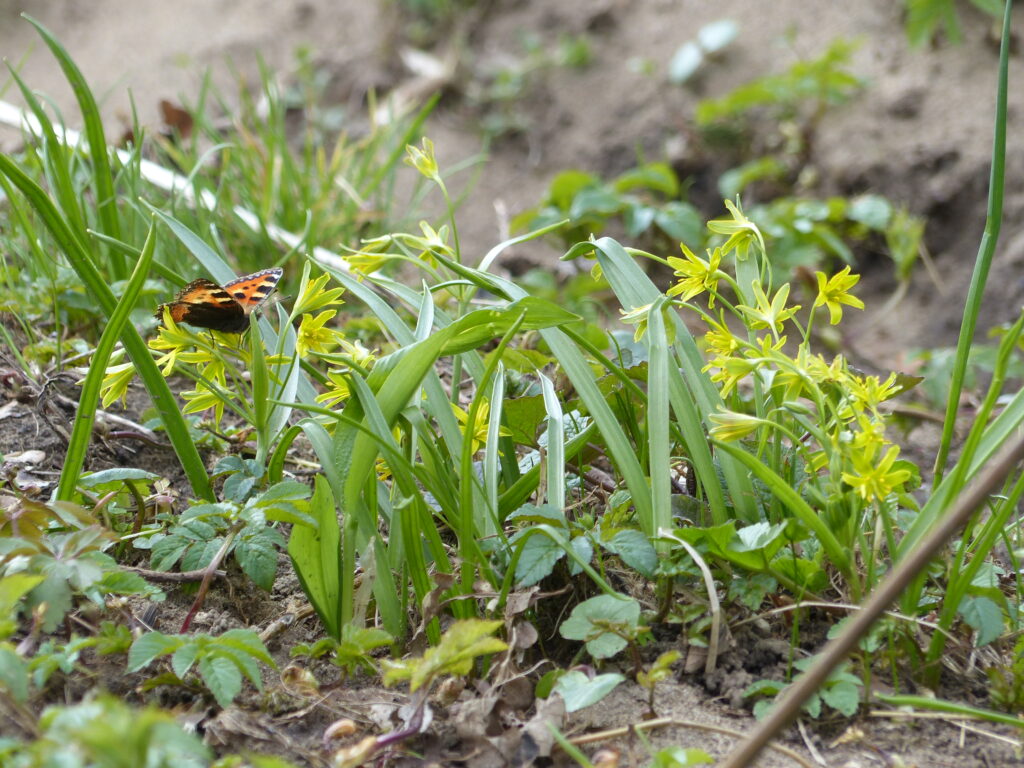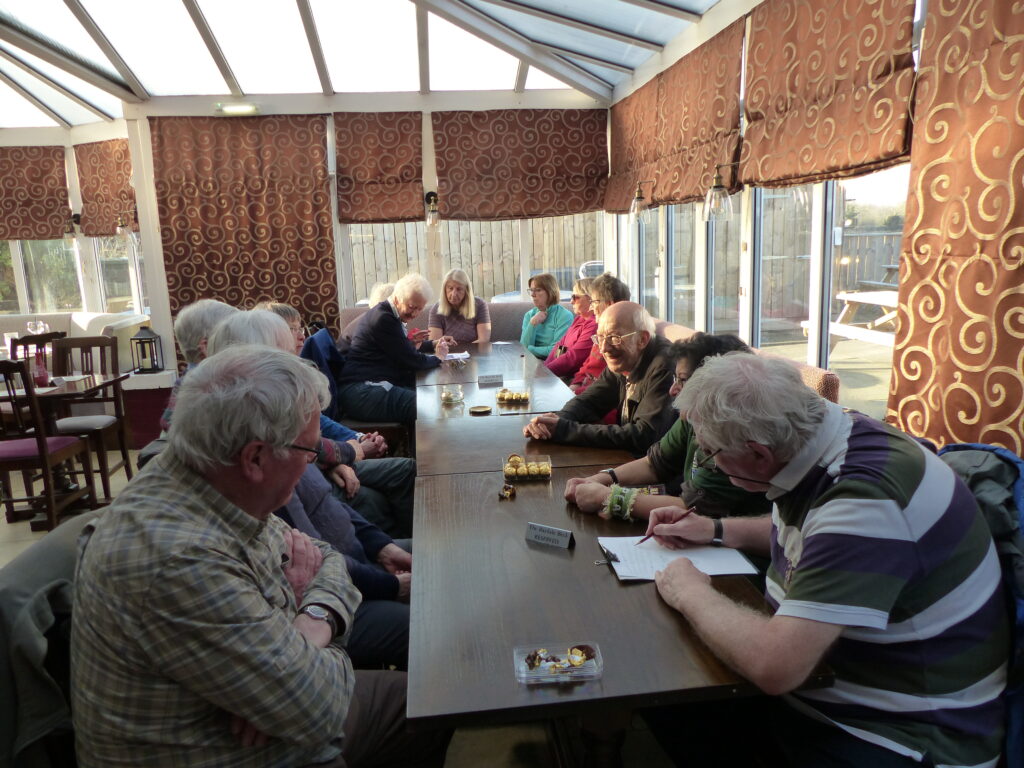20TH of March 2022 was the vernal equinox day in Northern Hemisphere, which marks the beginning of the spring season. The day was sunny with 13 degrees Celsius temperature. At 2 PM twelve members from the club joined in this memorial walk to count the Yellow Star-of-Bethlehem at Low Coniscliffe village.
The ground is sandy and it gets inundated as the River Tees water level rises every year. Members were shown how to count each plant. We were counting only the flowering plant with a single basal leaf and one flowering stem per plant. This plant has 2-3 leaf-like bracts, but the basal leaf has unique acuminate hooded tip and three veins present. There were many plants without flowers. Here each club member made a valuable contribution and the total count was 605 flowering plants.
On 21st March 2021 the counts were 496 at this site. Our club member late Don Griss has been monitoring this for many years and it is very important that club continues this practice. This would provide much interesting information particularly in this global warming situation.
We have seen Cherry Plum Prunus cerasifera, one of the first trees to come into flower in spring. This has identical blooms to Blackthorn but flowers in April.
Blackthorn has clustered buds, smaller flowers but here buds were single and flowers bigger.
We recorded Sweet Violet Viola odorata L. with rich violet flowers and shiny leaves and Viola odorata var.dumetorum with white flowers. Both plants were in small patches with fragrant flowers. Ambient temperature plays a role in these sweet scented flowers. Wood Anemone Anemone nemorosa also carpeted the ground under the canopy of tall trees. Thanks to Lynne Heslop and Jill Cunningham for recording the flora. There were 605 plants recorded. We started our walk with the drumming of Lesser Spotted Woodpecker and at the end there was one Tree Creeper feeding on insects on a Beech tree. Thanks to John Turner for recording the birds. Jill pointed out rows of reddish brown fungus called Mensularia radiate growing in an Alder tree from the lower part of the tree right up to the top of tree. This was probably a dying tree. This fungus will eventually kill the tree and put all the nutrients back into the soil. There was one Tree Bumble bee Bombus hypnorum with ginger brown thorax and black abdomen with white tail. The queen bees are emerging now from winter hibernation.
I would like to think that the club will continue this valuable monitoring in future. Also my sincere thanks to all the members for counting the plants. The finishing touch was enjoying lovely refreshment at local Baydale Beck pub.


